Heinkel 111 1H-EH - the Heinkel that flew for both the Luftwaffe and the RAF
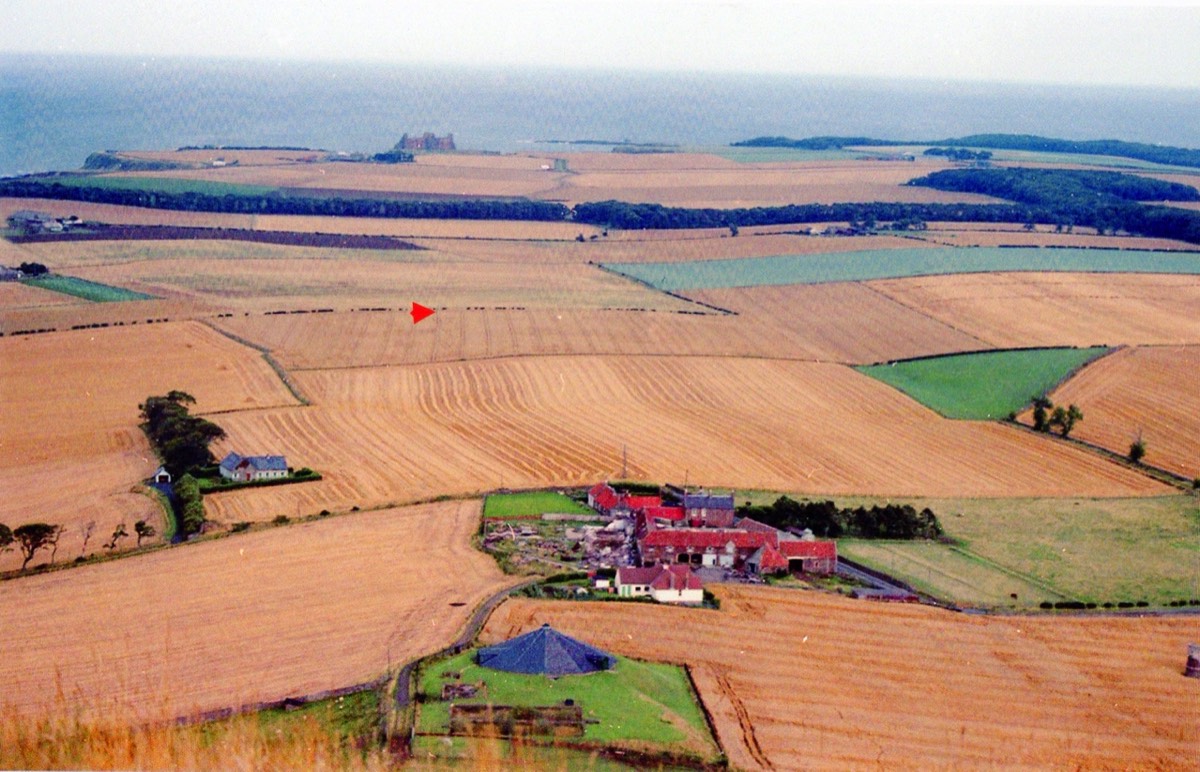
Bass Rock Farm, North Berwick, [formerly known as Heugh Farm] looking roughly north east towards Tantallon Castle. It was on this farm that the Heinkel 111 1H-EH was forced to crash land by Sq Leader Douglas Farquhar on the 9th February, 1940. The approximate position of the Heinkel is marked by the red triangle.
[John Guy]
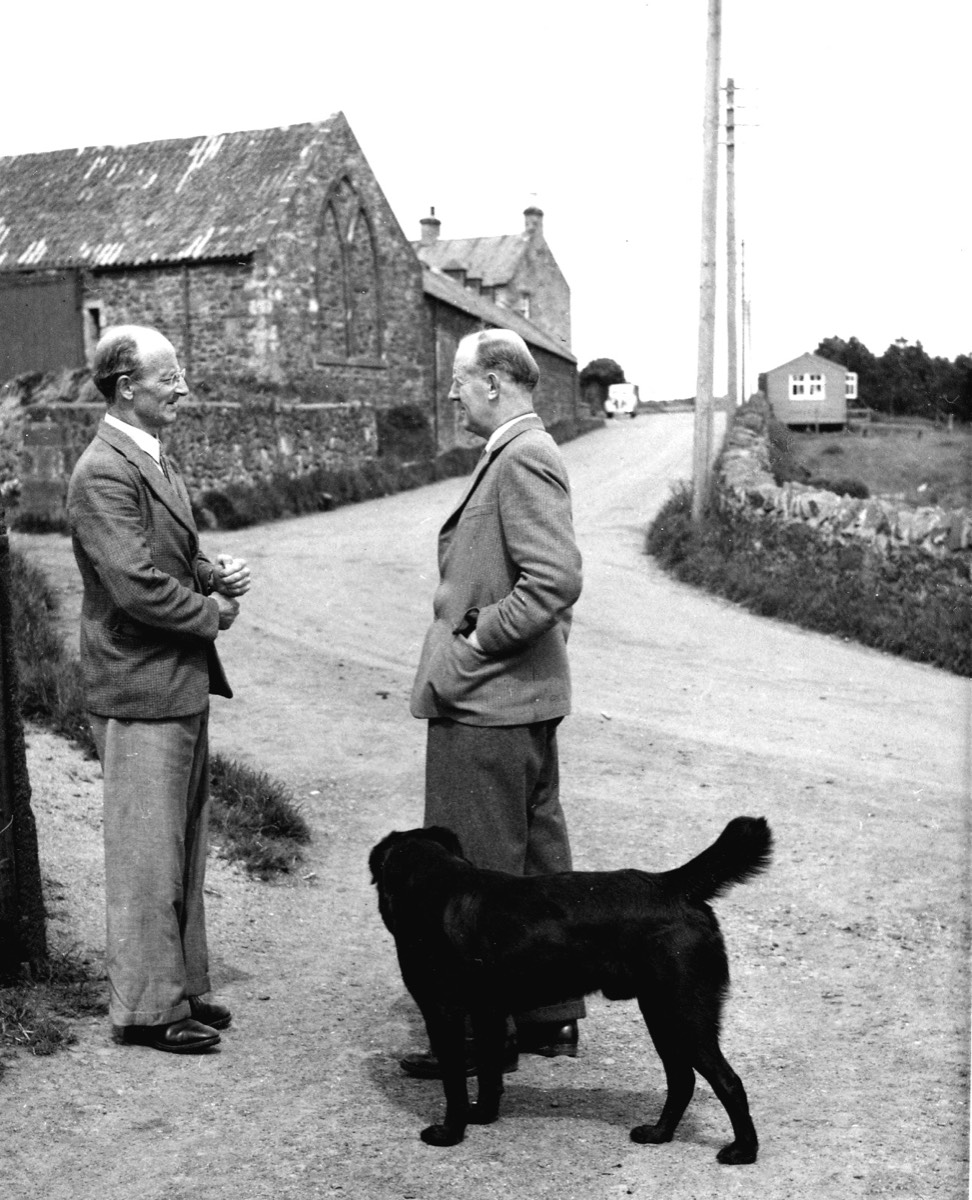
David Wright (on the left)
Farmer, Bass Rock Farm
[John Guy]
William J. Wright, CBE
Farmer, Bass Rock Farm
[John Guy]
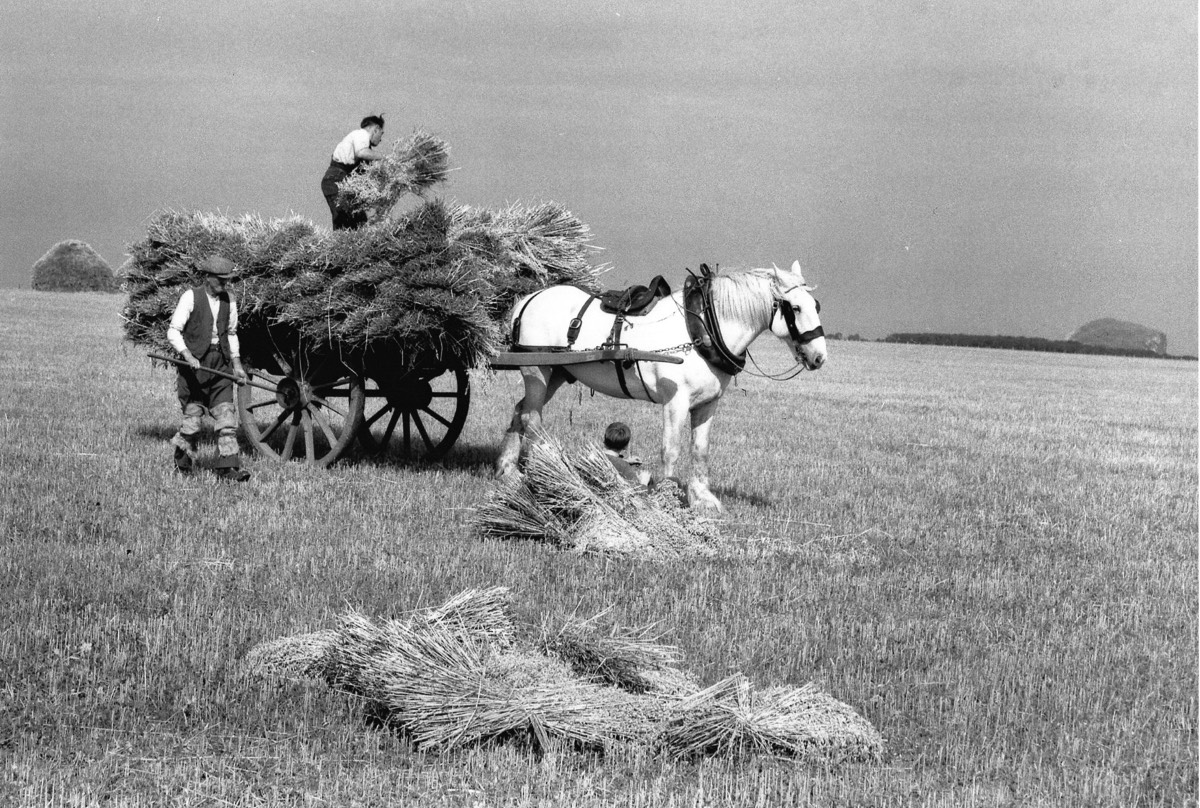
Haymaking on Bass Rock farm in the early 1950s. John Guy is just visible, lying on hay stooks.
[John Guy]

A reaper/binder at Bass Rock Farm in the early 1950s. It can't have looked very different in the 1940s.
[John Guy]
The story of Heinkel 1H-EH
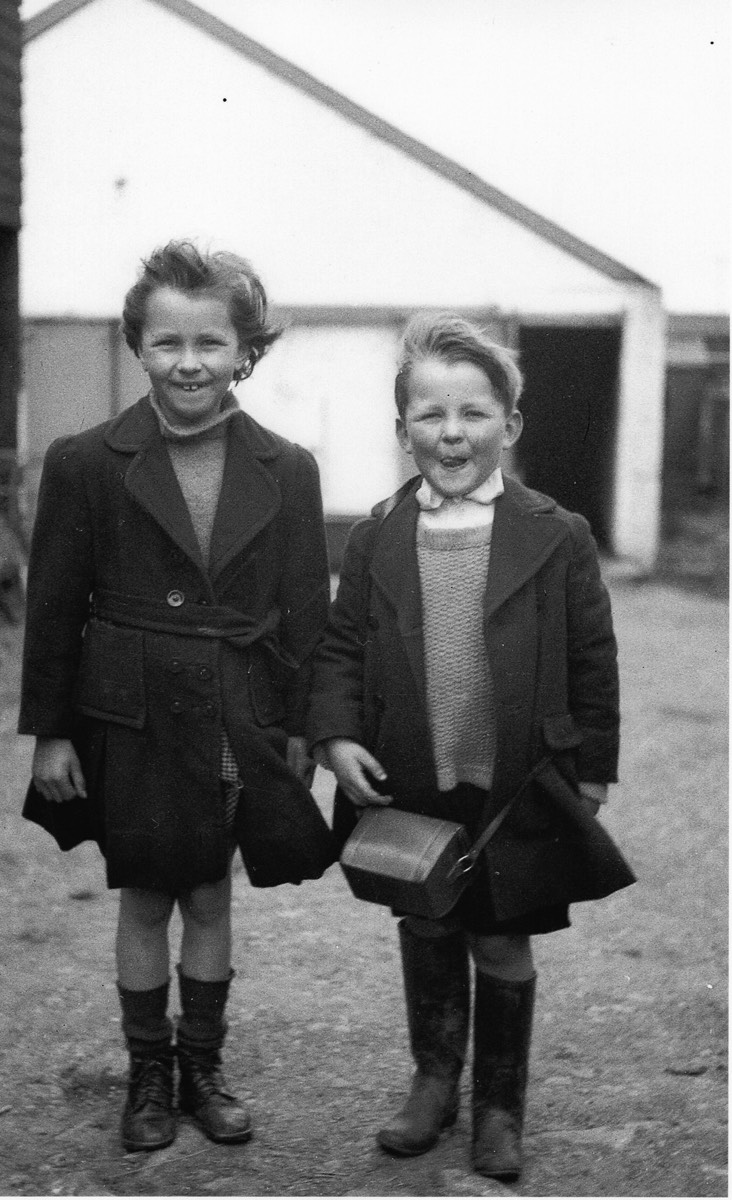
John Guy & his sister at Bass Rock Farm in the early 1940s. John has his gas mask in its carrier box ready for action.
[John Guy]
John Guy, retired surgeon, was born in the late 1930s and came to Bass Rock Farm [formerly Heugh Farm] east of North Berwick, around Midsummer in 1940. This dairy and poultry farm had been in the hands of his family since 1931 and he well remembers his Uncle, David Wright, describing the events surrounding the crash landing of Heinkel 111 1H-EH of KG26 on the farm, on the 9th February, 1940. This particular aircraft was the second shot down over land in Scotland and the third German aircraft shot down over land in the UK. When one considers its subsequent history in the hands of the RAF, this was indeed a noteworthy aircraft.
Another uncle of John's was William J. Wright, a well-known figure in farming circles who was President of the Chamber of Agriculture of Scotland. In later years his was to become a very well-known voice as he was to broadcast regularly on the BBC Home Service in 'Farm Forum'. William farmed Bass Rock Farm's 186 acres for fifty years in partnership with his brother David. During the war years William was a Special Constable.
Based upon David's account, his nephew, John, wrote the following description of the downing of the Heinkel:
"Heinkel He111H-3 '1H-EH' of 5 Staffel II/KG 26 Westerland was lost on combat operations on the 9th February, 1940. This aircraft took off from Westerland at about 09:30 hrs. Flying at 650 feet, the crew made landfall at the mouth of the Firth of Forth at May Island. They sighted a ship of about 6,000 tons which they were about to attack when they realised it was Danish, flying seven flags for identification. The crew then saw a cruiser which opened fire on them and deciding that the Danish ship must in fact be part of a convoy, prepared to bomb it.
The wireless operator then spotted some fighters so they sought the safety of the clouds but when they tried to attack again they were once more driven off by fighters and a warship. After flying for a few minutes towards home, the crew decided they should try again and turned back towards the coast and, while flying south at 2,300 feet, they were attacked by three Spitfires which mortally wounded the wireless operator who was manning the top gun position. The attack also damaged the oil sumps and radiators of both engines."
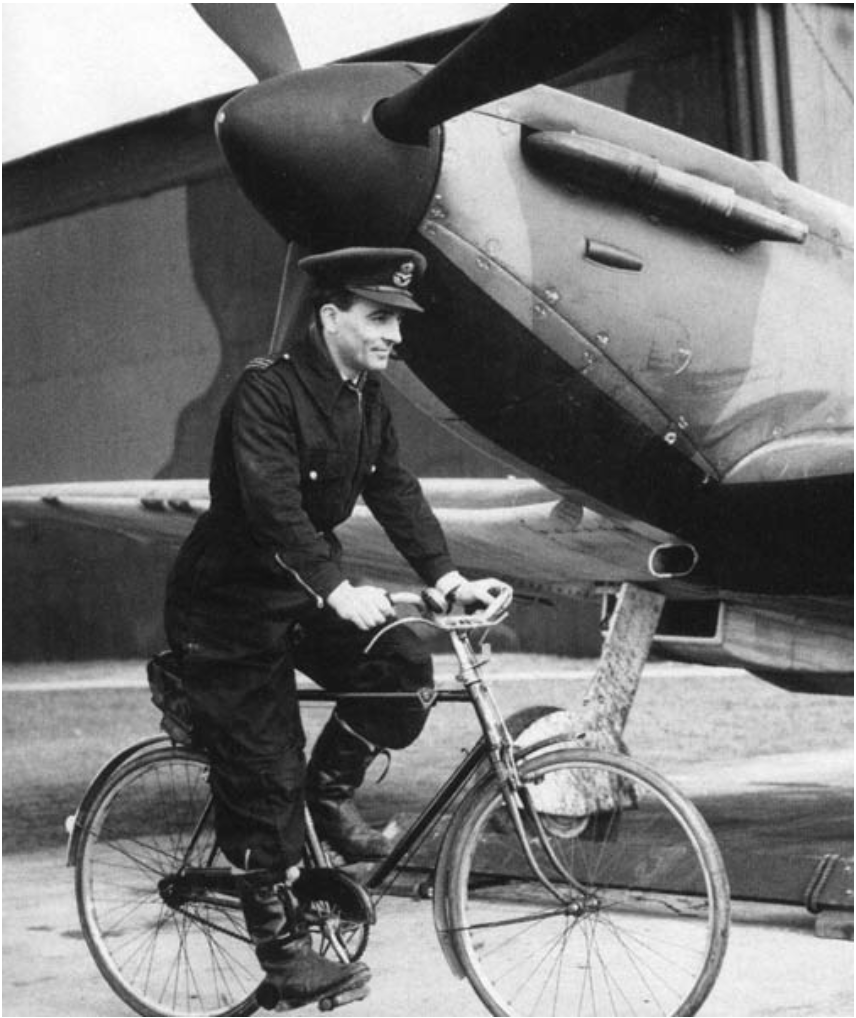
Squadron Leader Douglas Farquhar
Who took part in downing Heinkel III 1H-EH
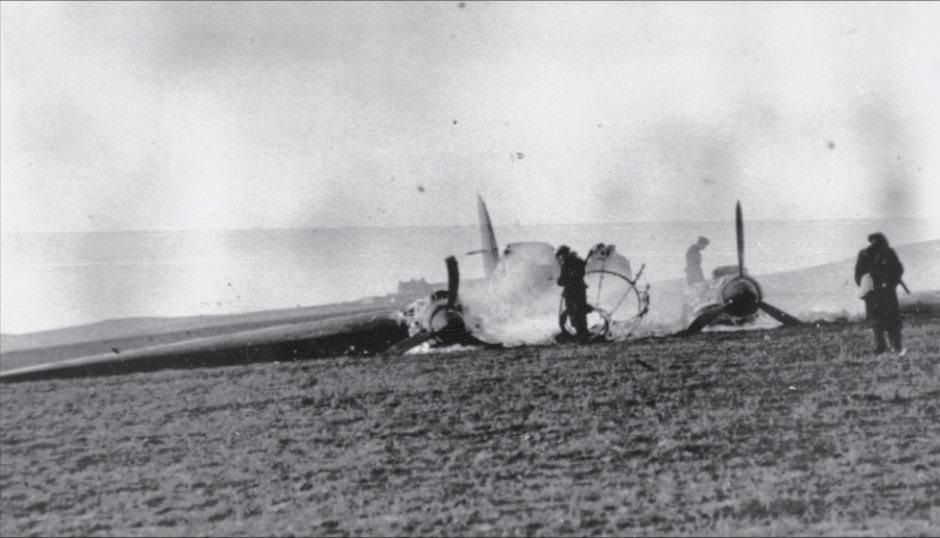
The remains of the Heinkel Sq. L. Farquhar shot down near St Abb's
"Turning out over the Bass Rock Lighthouse and with both engines out of action, the pilot decided to attempt a landing. He now had three fighters on his tail and he jettisoned the bomb load of four bombs into the sea, the last falling about one hundred yards from the shore. Lowering the undercarriage and switching on the navigation lights, perhaps to indicate surrender, perhaps simply to enable a safe landing, or both, the pilot managed to bring the Heinkel down at the eastern edge of Bass Rock Farm near North Berwick, East Lothian. The aircraft ran parallel to a farm border hedge, without touching it, tipping up onto its nose. It ground looped in very soft soil."
A report in the Evening Dispatch included a description of the aerial battle given by what appears to have been a member of the local Royal Observer Corps who lived near an OP in North Berwick. He described how the Heinkel had been fired on by what he took to be a destroyer in the Forth. Another eye-witness described how the Heinkel had 'staggered' after apparently being hit by a shell from the destroyer. It may well be that the Navy can claim some part in the downing of this particular German aircraft.
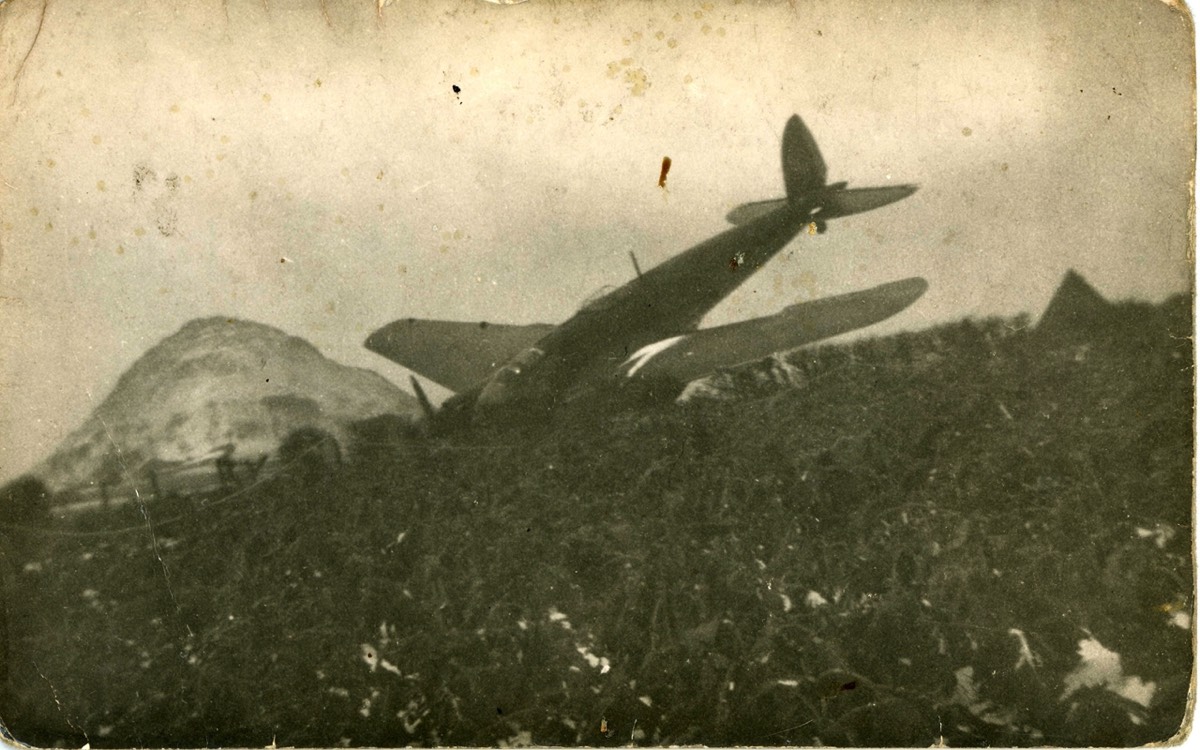
A photograph of the Heinkel from the adjacent Rhodes farm with Bewick Law in the background.
Notice snow on the Law and in the foreground right.
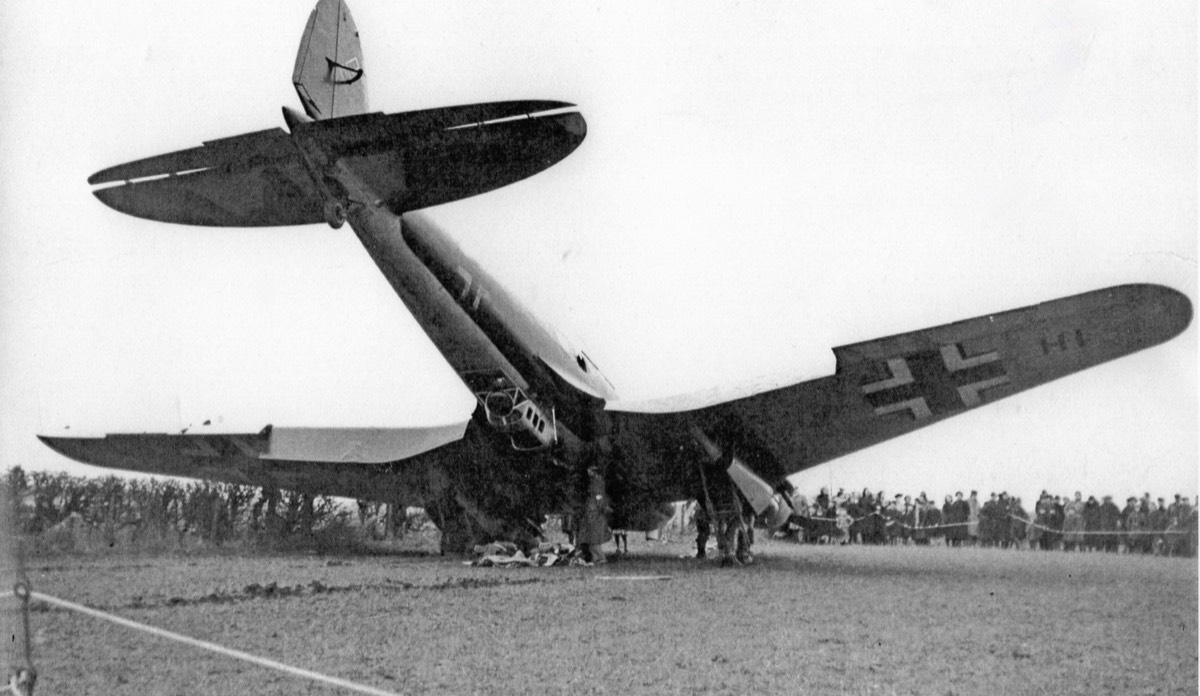
The Heinkel III, nose down in the soft earth, after its pilot had managed to land his damaged aircraft.
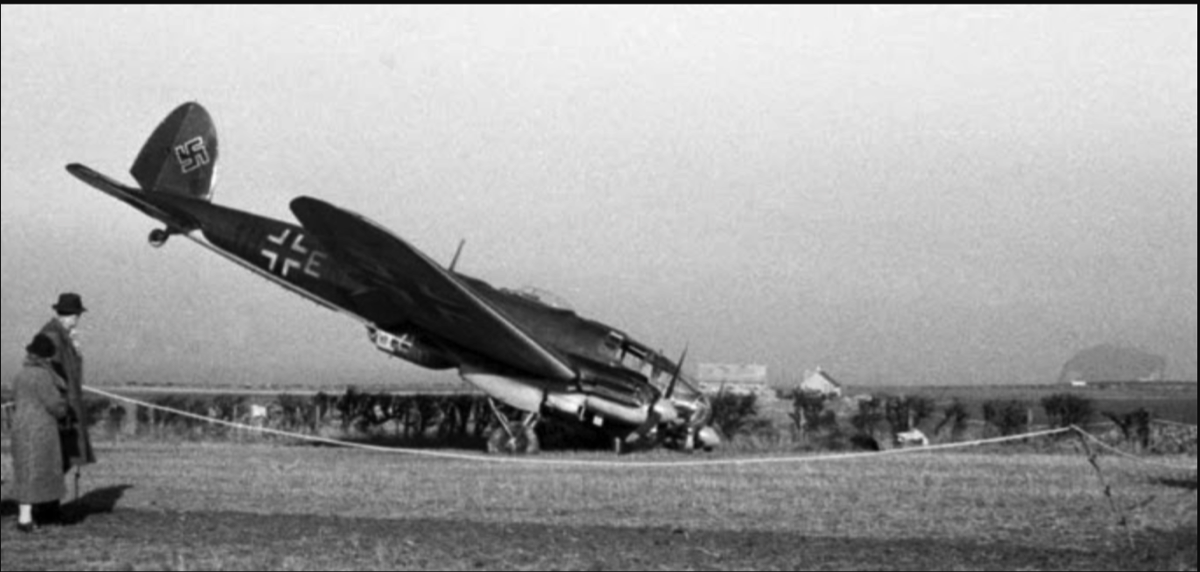
A final view from Bass Rock Farm with the Bass Rock in the background.
John Guy continued:
"My Uncle William, having seen the aerial battle and the aircraft landing on the farm, grabbed a shotgun (he was a part-time Special Constable during the war) and ran down to the plane just as the crew were getting their injured comrade out. This aircraft carried two incendiary devices for destroying the aircraft but the crew didn't have the time to activate them as William had arrived on the scene quickly enough to make them think twice. When he (and other farm workers) arrived, the crew appeared to be quietly discussing whether to resist or not, as they were all armed with Luger pistols. It was a tricky dilemma: imprisonment would be short (as they believed Hitler would soon and successfully invade) but to resist invited the firing squad.
Despite the presence of a growing crowd, the crew continued to attempt to destroy their aircraft as one of the crew quietly dropped a cigarette end into a pool of fuel leaking from one of the Junkers Jumo engines but it didn't catch fire. Diesel is less flammable than petrol and both engines were diesels. In the end, the crew thought better of resistance and surrendered to my uncle by throwing their Lugers at his feet. The crew was later taken to the local Police station on the back of a coal lorry."
Now and then John Guy regrets that his uncle was quite so honest, since he promptly handed all the Lugers in to the authorities and John missed out on some genuine souvenirs! The three crew who survived were interned as POWs. They were:
Pilot Uffz Helmut Meyer,
Uffz J Sangl and
Ogfr H Hegemann.
Their fellow crewman, Uffz Franz Weiners, died of injuries and, post-war, was buried in the Deutsche Soldatenfriedhof, Cannock Chase, England at Block 8, Grave 94. A local member of the Voluntary Aid Detachment, Miss Sheila Grahame, and Samuel Watson, poultry manager at the farm, both of whom were quickly on the scene, had attended to Franz Weiners' injuries but were clearly unable to save his life. Miss Grahame said that, "The German was very quiet while I was attending to his injuries. He was badly hurt but bore it very well. He didn't not speak to me all the time."
George A. Rodger, who lived with his family on the Kilduff Estate during the war, remembers seeing both the Kidlaw and the Bass Rock Farm Heinkels shot down. He wrote this brief account of the latter on the 15th October 1996:
"…I was a witness to the shooting down of both the Humbie [sic] and North Berwick Heinkels. In the case of the latter, I was the fourth person to reach the aircraft after it crashed nose down in the field that day. When I got to the site, the three uninjured crewmen were in the process of removing their fourth member from the underside of the machine. They put him down about fifty feet from the starboard wingtip and covered him with their flying jackets. The wounded man I remember well. He had a very bad colour and I see … that he did not survive. The other thing I recall clearly was the humming sound coming from the plane, presumably [from] generators. The pilot, a small, dapper man, told us to keep away from the aircraft, no doubt in case of fire. Shortly afterwards, I remember the Police arrived to deal with the Germans."
So many people came to view the aircraft that the opportunity was used to make a bit of money for charity! £52 was collected, some of which went to support the Finns, then fighting the Russians.
1H-EH flies for the RAF
The decision was unsurprisingly taken to remove and repair 1H-EH and, if possible, to restore it to flying condition so that its flying characteristics could be fully explored. The aircraft was therefore prepared for transportation to a suitable repair facility. Its wings were removed and, in an event recorded on film, the Heinkel was towed through East Lothian and Musselburgh and on out to RAF Turnhouse .
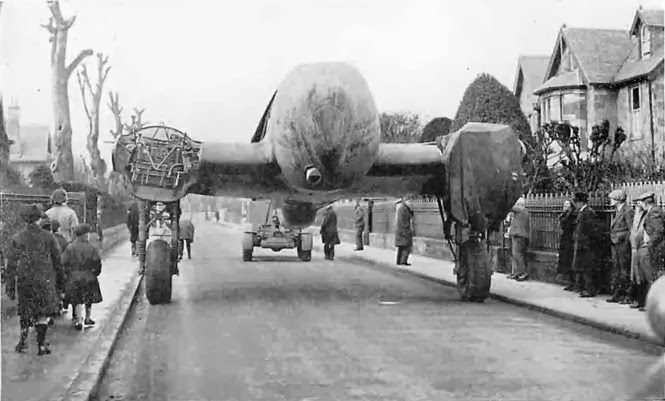
The Heinkel being towed along a street in North Berwick
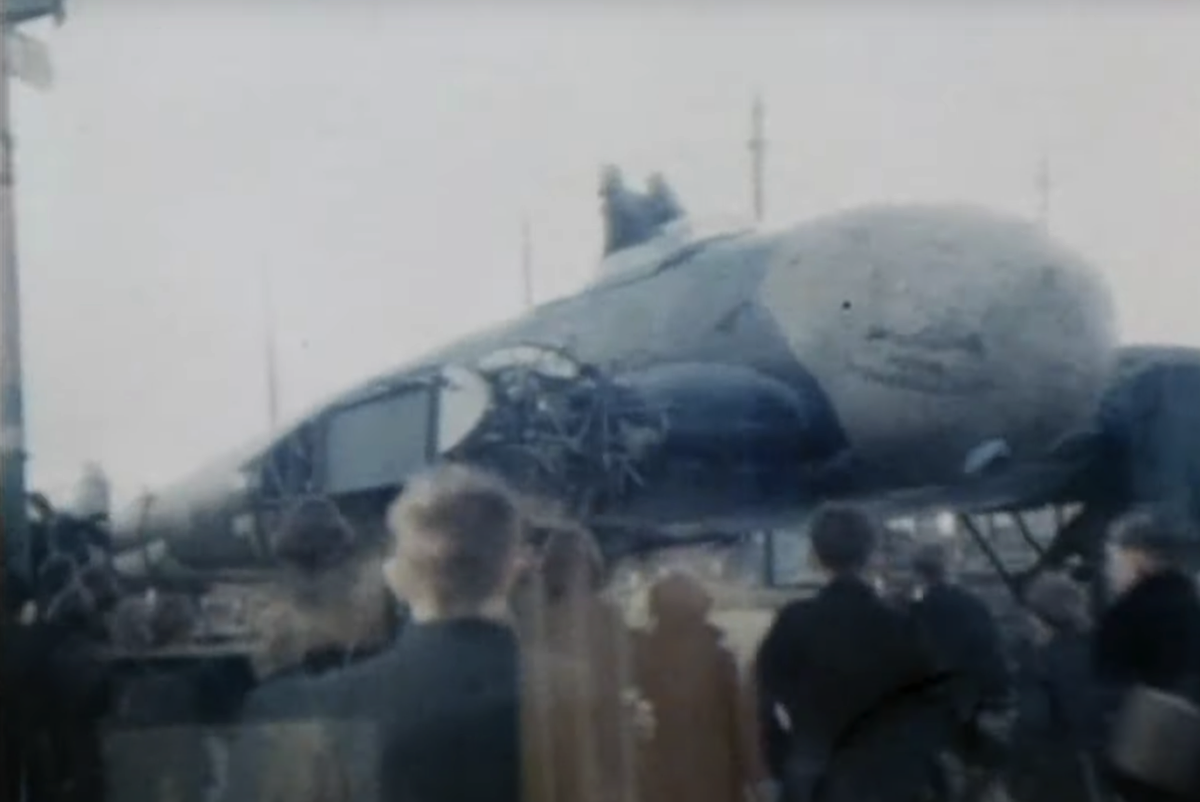
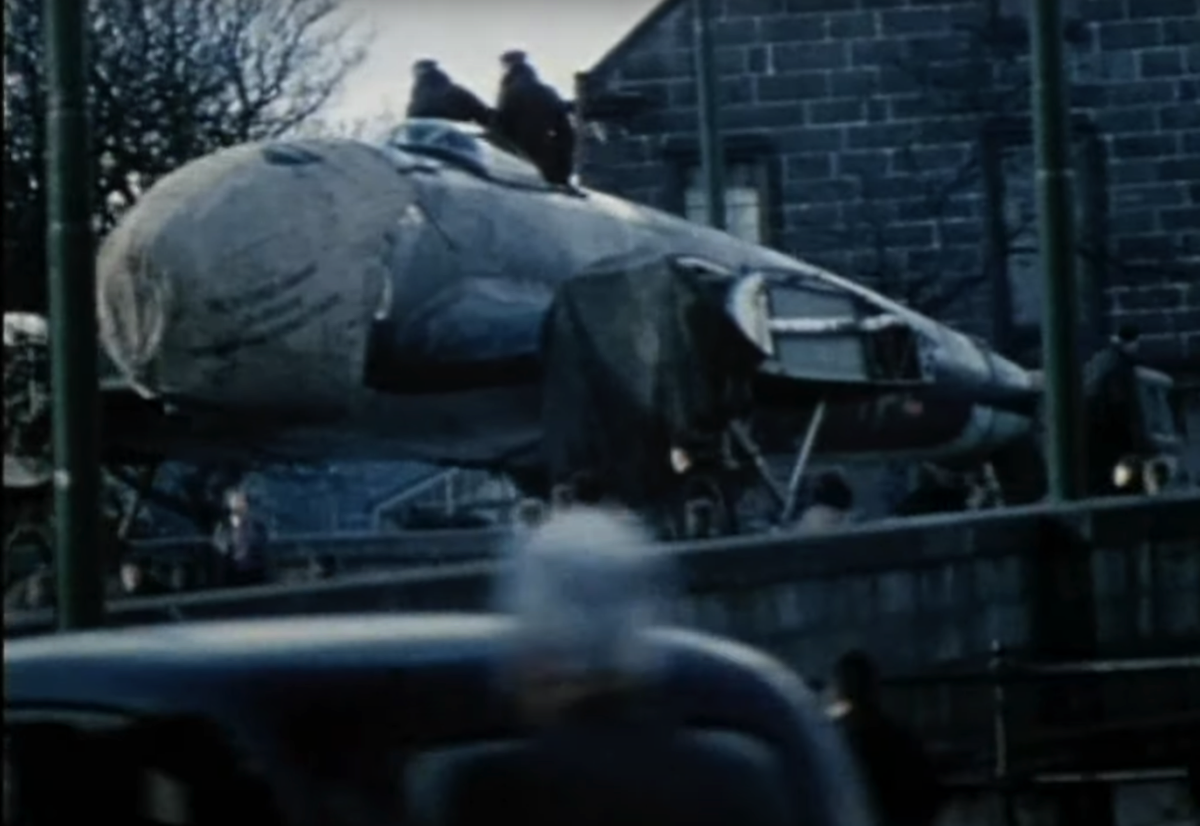
Two stills from a film shot of the Heinkel as it passed through Musselburgh en route for Turnhouse.
RAF Flight 1426
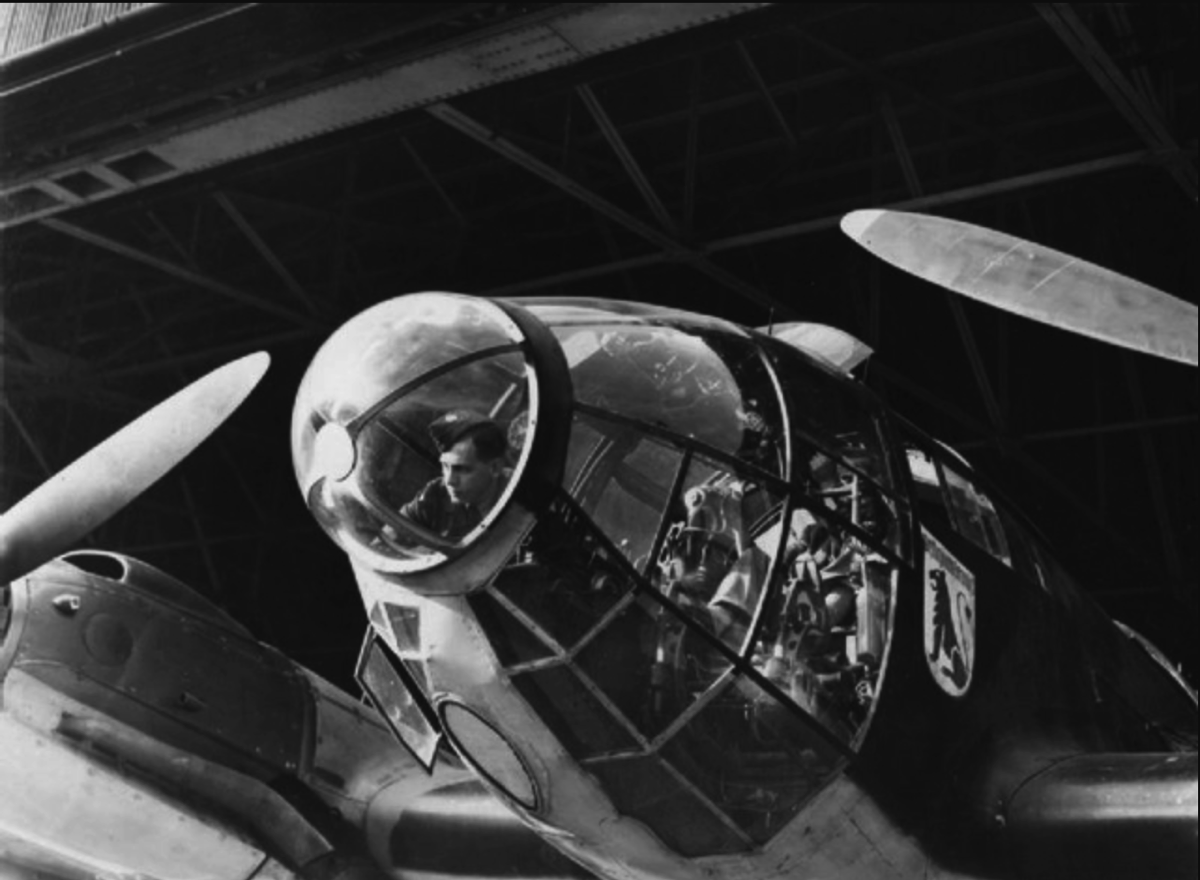
An RAF technician works on Heinkel 1H-EH at RAF Turnhouse..

The Bass Rock Farm Heinkel flying in RAF colours as AW177.
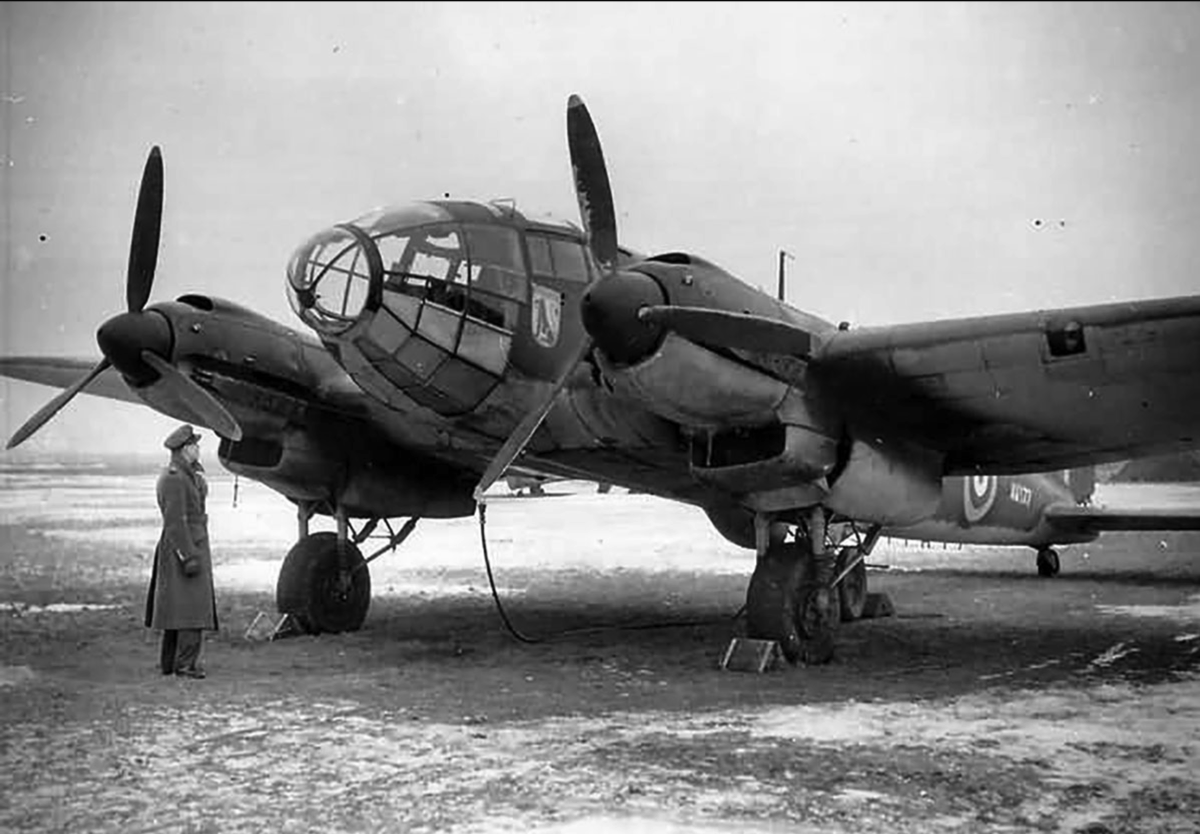
AW477 on a wintry day, probably at Duxford.
The American actor, Clark Gable, flew on five missions from RAF Polebrook and took part in filming the raids to produce a film intended for American Air Force gunners called 'Combat America'. The Bass Rock Farm Heinkel can be seen flying in this film, which is available on You Tube.

